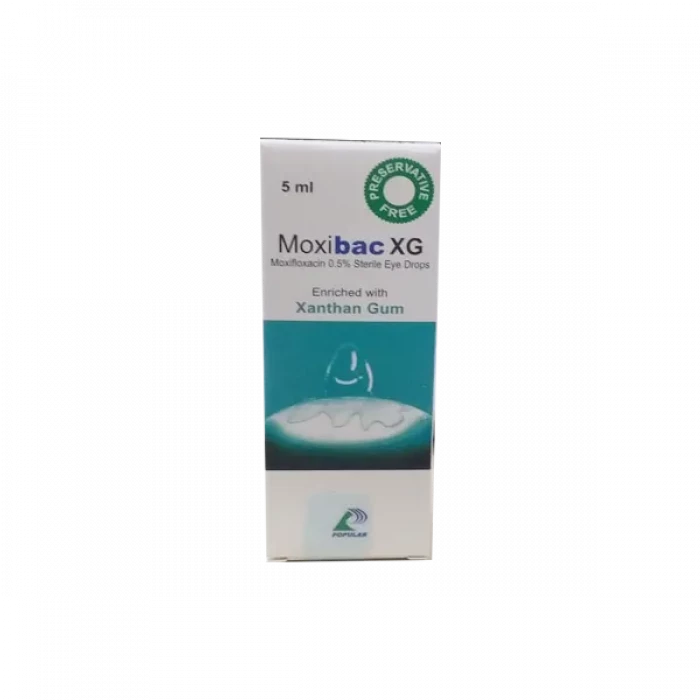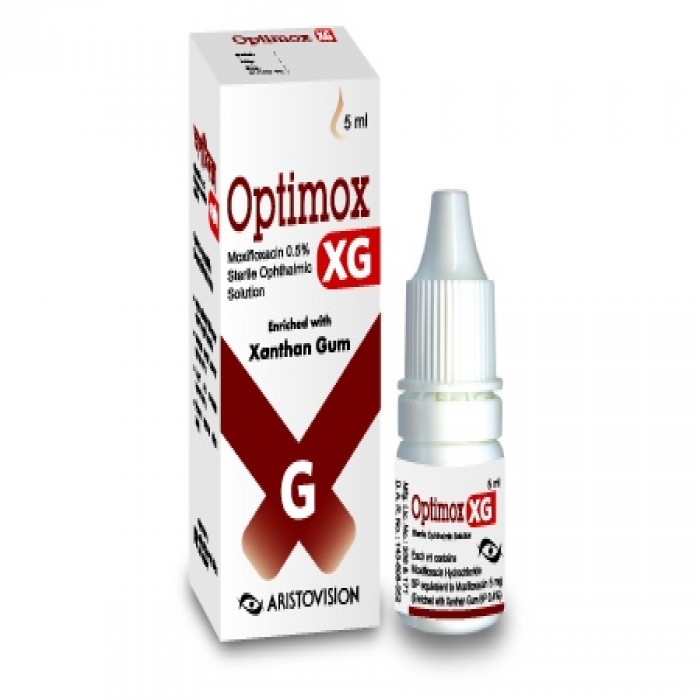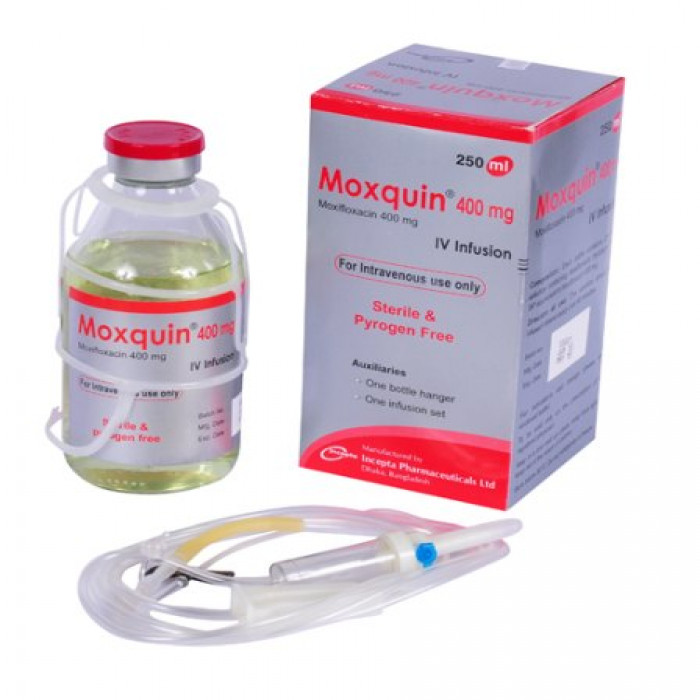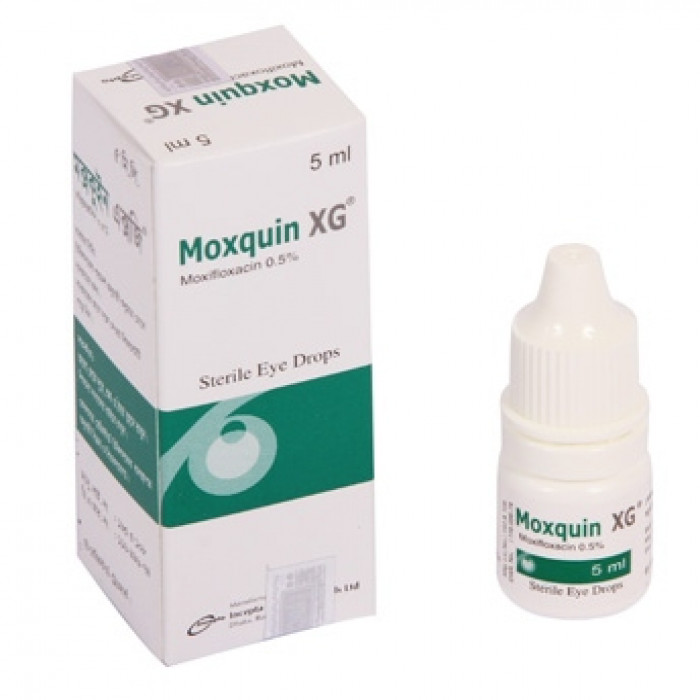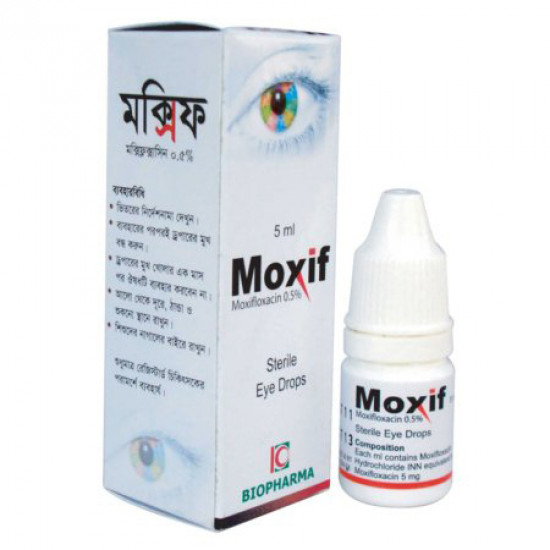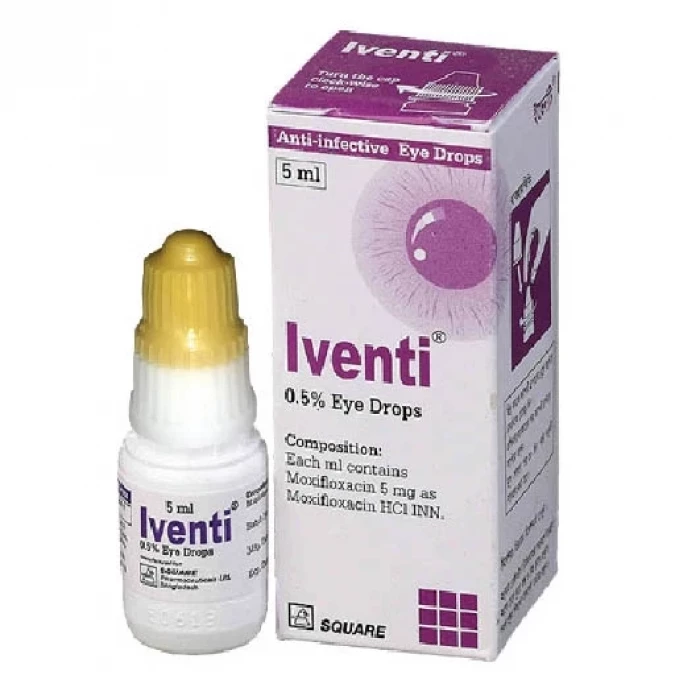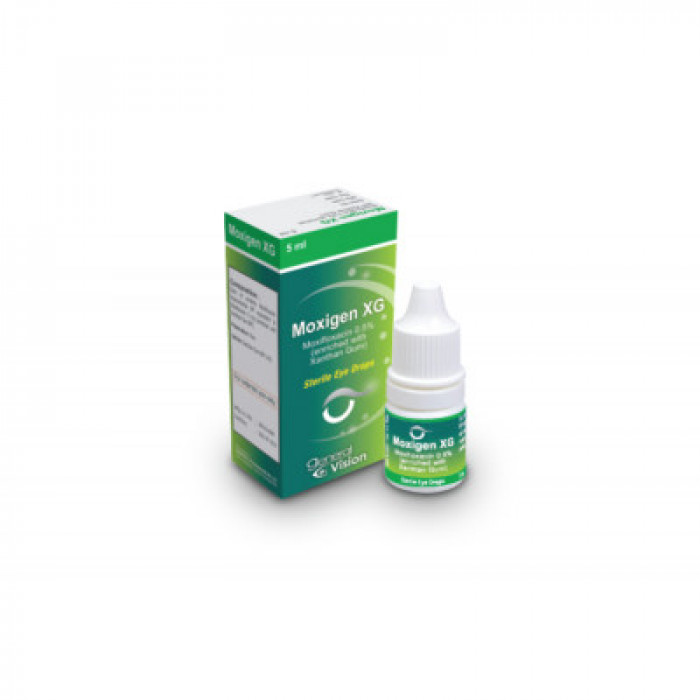
✔ 100% Authentic Product
👁️ Currently Viewing 1461
Moxigen XG
Generic Name: Moxifloxacin Hydrochloride + Xanthan Gum 0.5%+0.4%
Discount
Price: ৳ 143
MRP:
৳
150
5%
Off

100% Genuine Products, Guaranteed

Safe & Secure Payments, Always

Fast, Secure & Efficient Delivery

Proper Packaging
 Cash on Delivery - All over Bangladesh
Cash on Delivery - All over Bangladesh Regular Delivery - 12-24 Hours, Dhaka City* Charge Tk.39-59
Regular Delivery - 12-24 Hours, Dhaka City* Charge Tk.39-59 Regular Delivery - 24-48 Hours, Other Cities* Charge Tk.99-110
Regular Delivery - 24-48 Hours, Other Cities* Charge Tk.99-110
 ফ্রি ডেলিভারিঃ - ৯৯৯ টাকা+ অর্ডারে, ঢাকা
শহরে
ফ্রি ডেলিভারিঃ - ৯৯৯ টাকা+ অর্ডারে, ঢাকা
শহরে ফ্রি ডেলিভারিঃ - ২৯৯৯ টাকা+ অর্ডারে, ঢাকার
বাহিরে
ফ্রি ডেলিভারিঃ - ২৯৯৯ টাকা+ অর্ডারে, ঢাকার
বাহিরে
100% Genuine Products, Guaranteed
Safe & Secure Payments, Always
Fast, Secure & Efficient Delivery
Proper Packaging
 Cash on Delivery - All over Bangladesh
Cash on Delivery - All over Bangladesh Regular Delivery - 12-24 Hours, Dhaka City* Charge Tk.39-59
Regular Delivery - 12-24 Hours, Dhaka City* Charge Tk.39-59 Regular Delivery - 24-48 Hours, Other Cities* Charge Tk.99-110
Regular Delivery - 24-48 Hours, Other Cities* Charge Tk.99-110 ফ্রি ডেলিভারিঃ - ৯৯৯ টাকা+ অর্ডারে, ঢাকা
শহরে
ফ্রি ডেলিভারিঃ - ৯৯৯ টাকা+ অর্ডারে, ঢাকা
শহরে ফ্রি ডেলিভারিঃ - ২৯৯৯ টাকা+ অর্ডারে, ঢাকার
বাহিরে
ফ্রি ডেলিভারিঃ - ২৯৯৯ টাকা+ অর্ডারে, ঢাকার
বাহিরে
✅ Description:
Moxigen XG is an antibiotic, used in the treatment of bacterial infections of the eye. It relieves the symptoms of the infection by stopping the further growth of the causative microorganisms. Moxigen XG is for external use only. Take it in the dose and duration as advised by your doctor. Hold the dropper close to the eye without touching it. Gently squeeze the dropper and place the medicine inside the lower eyelid. Wipe off extra liquid. Avoid skipping any doses and finish the full course of treatment even if you feel better. It may cause eye discomfort, dry eyes and burning sensation in the eyes immediately following application. However, these side effects are temporary and usually subside on their own. Inform your doctor if they persist for a longer duration. It may cause short term blurring of vision when first used. Use caution before driving or using machines. Do not wear contact lenses while using it.
Uses of Moxigen XG
- Bacterial eye infections
Side effects of Moxigen XG
Common
- Eye discomfort
- Dry eye
- Burning sensation
How to use Moxigen XG
This medicine is for external use only. Take it in the dose and duration as advised by your doctor. Check the label for directions before use. Hold the dropper close to the eye without touching it. Gently squeeze the dropper and place the medicine inside the lower eyelid. Wipe off extra liquid.
How Moxigen XG works
Moxigen XG is an antibiotic. It treats bacterial eye infections by preventing the bacteria from dividing and repairing. It does so stopping the action of a bacterial enzyme called DNA-gyrase.
What if you forget to take Moxigen XG?
If you miss a dose of Moxigen XG, take it as soon as possible. However, if it is almost time for your next dose, skip the missed dose and go back to your regular schedule. Do not double the dose.
Quick Tips
- You have been prescribed Moxigen XG for the treatment of bacterial infections of the eye.
- Do not skip any doses and finish the full course of treatment even if you feel better.
- Apply pressure on the corner of the eye (close to the nose) for about 1 minute, immediately after instilling the medication.
- Do not touch the tip to any surface, or to your eye, to avoid contamination.
- Wait for at least 5-10 minutes before delivering the next medication in the same eye to avoid dilution.
- It may cause short term blurring of vision when first used. Use caution before driving or using machines.
- Do not wear contact lenses until your infection clears up.
- Make sure to use within 4 weeks of opening the medication.
Brief Description
Indication
Bacterial Conjunctivitis. This drug is indicated to increase tear production in patients whose tear production is suppressed due to ocular inflammation associated with dry eye syndrome (keratoconjunctivitis sicca).
Adult Dose
Ophthalmic Bacterial conjunctivitis Adult: As 0.5% soln: Instill 1 drop into the affected eye(s) bid-tid for 7 days. It can be used concomitantly with artificial tears, allowing a 15 minute interval between products.
Child Dose
Ophthalmic Bacterial conjunctivitis Child: >1 yr: Instill 1 drop into the affected eye(s) tid for 7 days.
Contraindication
Patients with a history of hypersensitivity to Moxifloxacin, to other Quinolones or to any of the components in this medication
Mode of Action
Moxifloxacin inhibits the topoisomerase II (DNA gyrase) and topoisomerase IV required for bacterial DNA replication, transcription, repair and recombination.
Precaution
As with other anti-infectives, prolonged use may result in overgrowth of non-susceptible organisms, including fungi. If superinfection occurs, discontinue use and institute alternative therapy. To prevent contamination do not touch the tip of the dropper to eye, eyelid or any surface of of the affected eye. Keep the bottle tightly closed after use. Lactation: Unknown whether drug is excreted in breast milk; use with caution
Side Effect
1-10% Conjunctivitis,Dry eye,Fever,Increased cough,Infection,Ocular discomfort,Ocular hyperemia,Ocular pain,Ocular pruritus,Otitis media.Pharyngitis,Rash,Rhinitis,Subconjunctival hemorrhage.Tearing
Interaction
Additive effect on QT interval prolongation w/ other drugs that prolong QT interval (e.g. erythromycin, TCAs, antipsychotic agents). Decreased absorption and bioavailability w/ Al- or Mg-containing antacids, or Fe or Zn preparations. Concomitant use of corticosteroids increases the risk of severe tendon disorders esp in elderly (>60 yr). Decreased absorption w/ sucralfate or didanosine. Potentially Fatal: Concurrent use of class Ia (e.g. quinidine, procainamide) or III (e.g. amiodarone, sotalol) antiarrhythmic drugs or w/ other drugs that prolong QT interval (e.g. erythromycin, TCAs, antipsychotic agents) may cause additive effect on QT interval prolongation.
⚠️Disclaimer:
At ePharma, we’re committed to providing accurate and accessible health information. However, all content is intended for informational purposes only and should not replace medical advice from a qualified physician. Please consult your healthcare provider for personalized guidance. We aim to support, not substitute, the doctor-patient relationship.




